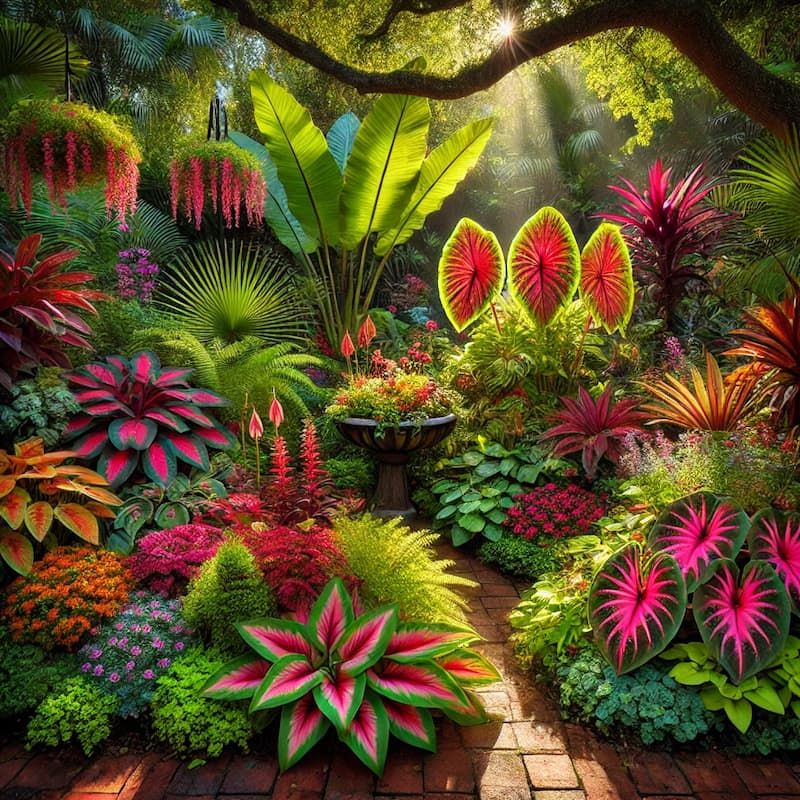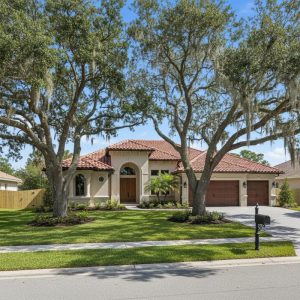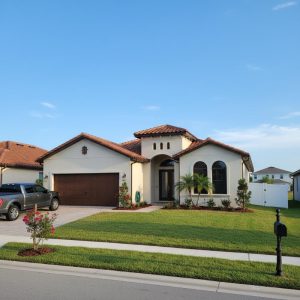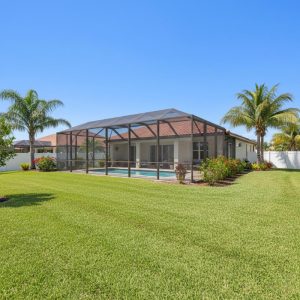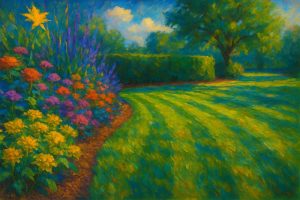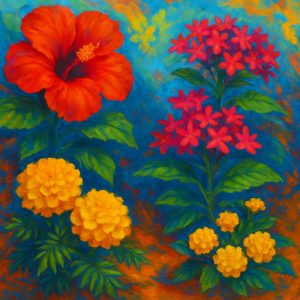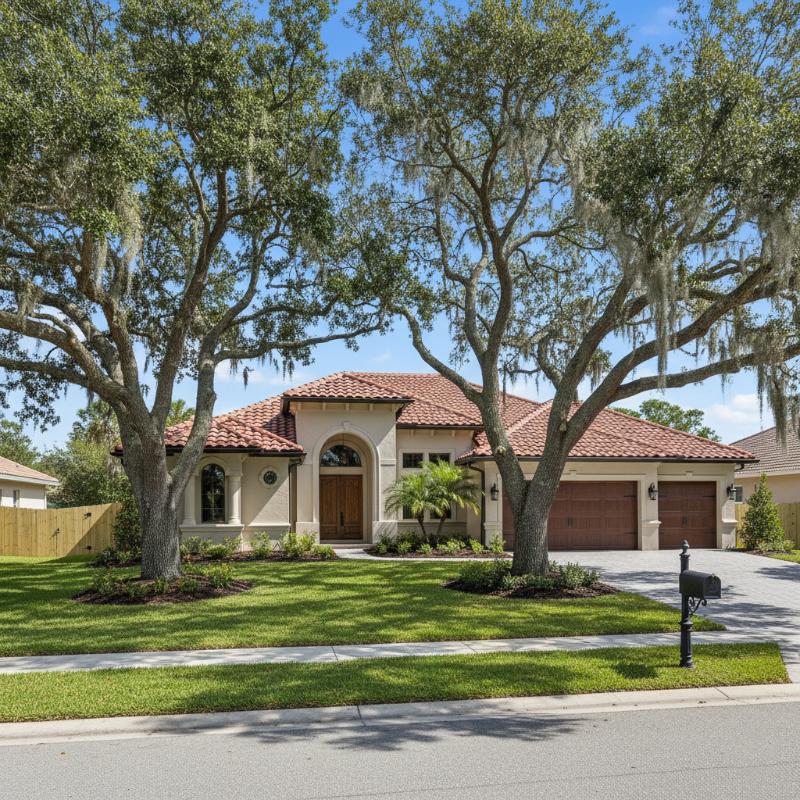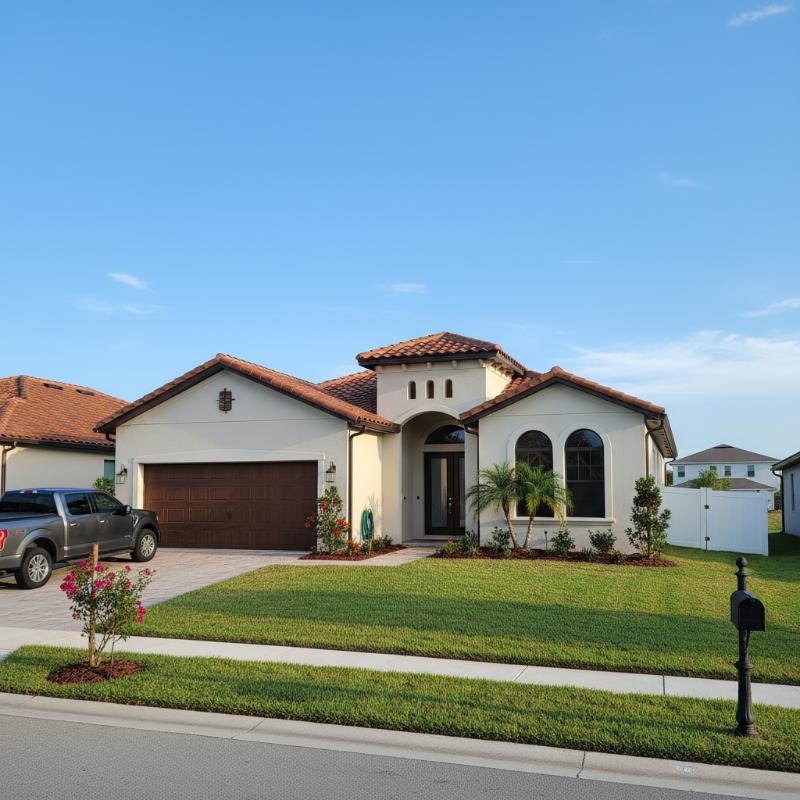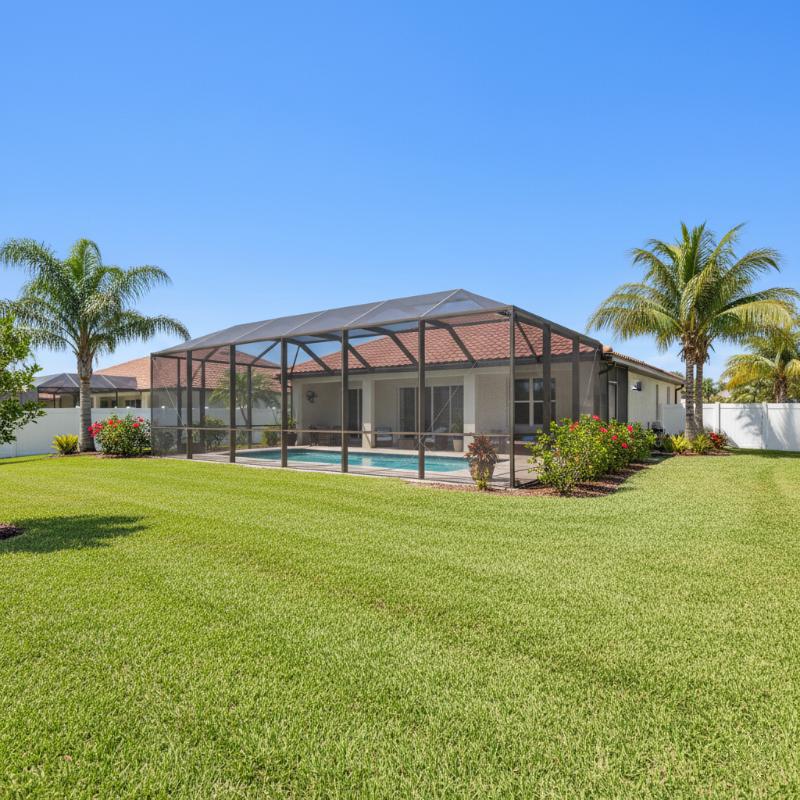Discover the best full shade perennials for Davis Island and create a lush, low-light garden with ease. Perfect for shady Florida spaces!
The Importance of Choosing Shade-Tolerant Plants
Understanding Shade Conditions on Davis Island
Davis Island’s unique subtropical climate offers plenty of warmth, but shaded areas can pose a challenge for plants. Many garden spots get limited direct sunlight due to surrounding buildings, trees, and walls. To thrive, it’s crucial to select perennials specifically adapted to full shade, allowing your garden to flourish even in low-light areas.
Benefits of Full Shade Perennials
Full shade perennials offer the beauty of a lush garden without demanding constant sunlight. These plants are naturally adapted to grow in lower light conditions, meaning they don’t rely on direct sunlight for photosynthesis. Choosing shade perennials allows you to add vibrant colors and textures to your garden with minimal fuss, perfect for shaded areas on Davis Island.
Key Factors in Choosing Shade Plants
When selecting shade plants, focus on their adaptability to Florida’s heat and humidity. Look for drought-resistant, hardy varieties that can handle the area’s occasional dry spells and seasonal rains. Shade plants with broad leaves often work well, as they can absorb more ambient light, making them ideal for shaded gardens.
Low-Maintenance Choices for Shady Areas
Opting for low-maintenance plants is essential if you want a beautiful garden without constant upkeep. Shade-tolerant perennials typically need less water and are resilient against common pests. Varieties like ferns, hostas, and caladiums bring lush textures without requiring daily care, allowing you to enjoy a thriving garden with minimal effort.
Best Seasons to Plant in Florida’s Climate
In Florida, fall and spring are ideal times to plant shade perennials. These seasons offer mild temperatures, which allow new plants to establish roots without the stress of intense heat. Planting during these seasons ensures that your garden has time to develop before facing the hottest months, giving perennials the best chance for long-term success.
Tips for Long-Lasting Garden Design
When planning a shade garden, focus on layering plants to create depth and interest. Include ground covers, mid-height perennials, and taller shrubs or trees. This layering approach mimics natural growth in shaded forest areas, providing a garden design that looks full and vibrant. To keep the garden dynamic year-round, choose plants that offer a mix of evergreen foliage and seasonal blooms.
Top 10 Full Shade Perennials for Davis Island
Overview of Hardy Options for Davis Island’s Climate
Davis Island’s climate, with its mix of warm temperatures and high humidity, requires resilient plants that can handle fluctuating moisture levels and occasional dry spells. Shade-tolerant perennials like ferns, hostas, and caladiums are ideal for these conditions, as they’re not only beautiful but also built to withstand Florida’s unique environment.
Benefits of Choosing Native Perennials
Choosing native perennials for your shade garden offers several advantages. Native plants are adapted to the local climate, requiring less water and fertilizer than non-native varieties. Additionally, they provide a natural habitat for local pollinators, helping to sustain the ecosystem. Consider options like coontie or swamp lilies for a garden that’s both beautiful and environmentally friendly.
Popular Perennials for Lush, Shady Growth
Certain perennials thrive in full shade and add lush foliage to your garden. Varieties like cast iron plants, ferns, and Japanese fatsia are celebrated for their ability to grow even in deep shade. These plants bring rich textures and varying shades of green, creating a serene, tropical feel perfect for Davis Island’s shaded spaces.
Variety of Textures and Colors in Shade Perennials
Shade perennials aren’t limited to green foliage; many offer colorful blooms or patterned leaves. Caladiums, with their vibrant pinks and reds, and heucheras, with shades of burgundy, add pops of color that stand out in low light. Mixing colors and textures can make even a shaded garden feel vibrant and dynamic.
Seasonality and Year-Round Appeal
One of the best features of shade perennials is their ability to provide year-round appeal. While some perennials bloom seasonally, others, like ferns and cast iron plants, offer consistent greenery throughout the year. Strategically choosing plants with staggered bloom times, like adding impatiens for summer and autumn ferns, keeps your garden looking fresh all year long.
Where to Source These Plants Locally
Finding shade perennials suited to Davis Island’s climate is easy with the right local resources. Nearby nurseries often carry a variety of perennials adapted to Florida’s conditions, making them reliable sources for healthy plants. Additionally, visiting local gardening centers allows you to get expert advice on selecting and caring for plants that will thrive in your shady garden.
Planting & Caring for Shade Perennials in Florida
Soil Preparation for Shaded Areas
Preparing the soil is crucial for the success of shade perennials. Most shade-loving plants thrive in well-draining, nutrient-rich soil. Begin by loosening the soil and mixing in organic matter, such as compost or peat moss, to improve its structure and moisture retention. This will create an ideal foundation for root development, allowing plants to thrive even in low-light conditions.
Watering Needs in Low-Light Conditions
Shade perennials often require less water than their sun-loving counterparts, as shaded areas retain moisture longer. Water deeply but infrequently, allowing the soil to dry slightly between waterings. This practice encourages plants to develop deep roots, enhancing their resilience to dry spells. Always monitor soil moisture, as shaded areas can sometimes stay damp, which might lead to root rot if overwatered.
Fertilization Tips for Optimal Growth
Though shade perennials are relatively low-maintenance, a boost of nutrients can promote healthier growth. Use a balanced, slow-release fertilizer in spring, just as new growth begins. Avoid over-fertilizing, as shade plants can be sensitive to excess nutrients, which may encourage leggy growth rather than robust foliage. Adding a layer of compost annually also supplies essential nutrients naturally.
Managing Pests and Diseases in Shade Gardens
Shaded areas can be prone to issues like mold or mildew, which thrive in humid, low-light conditions. Ensure proper air circulation by spacing plants to reduce dampness. Applying organic mulch helps to regulate soil moisture without smothering plants, deterring pests and preventing fungal growth. Regularly inspect leaves for signs of pests like aphids or snails, treating any infestations early to prevent spread.
How to Maintain Soil Moisture Levels
Maintaining consistent moisture is key to keeping shade perennials healthy. Mulch is a shade garden’s best friend; it helps retain moisture and moderates soil temperature, keeping roots cool and hydrated. Use a two-inch layer of mulch around the base of plants, but avoid piling it against stems to prevent rot. In Florida’s summer months, check moisture levels frequently, adjusting watering as needed.
Seasonal Care Practices for Healthy Plants
Caring for shade perennials involves a few seasonal tasks to keep your garden in top shape. In early spring, remove any dead foliage and apply a light layer of compost. Prune plants as needed to remove damaged or overcrowded growth, which allows more air and light to reach the remaining foliage. During fall, add a fresh layer of mulch to protect roots through winter, setting your garden up for a lush spring revival.
Creating a Stunning Shade Garden Layout
Design Tips for Shaded Gardens
Designing a shade garden is all about maximizing the visual appeal of different textures, shapes, and colors. Start by assessing the layout of your space, noting any taller structures or trees that provide natural shade. Aim for a balanced arrangement, placing taller plants in the back and shorter, ground-cover varieties in the front. This layered approach adds depth and visual interest, making the garden feel lush and inviting.
Utilizing Layers for Depth and Interest
Layering plants in a shade garden creates a natural, forest-like effect that enhances the garden’s beauty. Use a mix of heights to form distinct layers: ground covers like creeping Jenny in the front, medium-sized ferns or hostas in the middle, and taller shrubs or ornamental trees in the background. This technique helps create a sense of depth, making even a small shaded space feel expansive and full.
Choosing Complementary Perennials
Selecting complementary perennials brings harmony and cohesion to your garden. Pair plants with contrasting leaf shapes and colors, such as variegated hostas with broad leaves alongside delicate ferns. Combining different shades of green with pops of color from perennials like caladiums or astilbes can create a dynamic yet cohesive look that brings your shade garden to life.
Importance of Ground Cover and Borders
Ground covers are essential for filling in gaps, preventing weed growth, and giving the garden a finished appearance. Varieties like pachysandra or ajuga are excellent choices for shade and spread easily, covering bare soil with rich greenery. Use borders of ground cover around pathways or as edging to give your garden a neat, structured appearance while reducing maintenance needs.
Tips for Arranging Plants by Color
Arranging plants by color can transform a shade garden from ordinary to extraordinary. To create depth, use darker foliage near the back and brighter, lighter colors at the front. For a pop of color, incorporate shade-tolerant flowers like impatiens or astilbe, placing them in clusters for a bold impact. Experiment with different color combinations to add personality and warmth to your shaded space.
Creating Focal Points in Shady Spaces
Every garden benefits from focal points that draw the eye and add intrigue. In a shade garden, use striking plants like Japanese maple or a decorative birdbath as a centerpiece. Position these focal points where they’ll naturally attract attention, such as at the end of a path or in a garden’s corner. Adding elements like large ferns or unique pottery can elevate the look, turning your shaded garden into a peaceful, captivating retreat.
Best Ground Cover Options for Full Shade
Benefits of Ground Cover Plants
Ground cover plants serve multiple functions in a shade garden. They create a lush, green carpet that fills in gaps, prevents soil erosion, and helps retain moisture. Ground covers reduce the need for constant weeding, acting as a natural barrier against unwanted plants. With the right choice of shade-tolerant varieties, ground covers can add beauty and practicality to your garden’s layout.
Top Ground Cover Varieties for Shade
Several ground covers thrive in shaded areas and are ideal for Davis Island gardens. Ajuga, with its purple-tinged foliage, and pachysandra, known for its dense, glossy leaves, are popular choices. Other options like creeping Jenny and mondo grass add texture and variety to shaded areas. Each of these plants spreads well and creates a vibrant, lush base for other perennials.
How Ground Cover Helps Reduce Maintenance
Once established, ground covers significantly lower the maintenance requirements of a garden. They help retain soil moisture, reducing the need for frequent watering. Their dense growth habit naturally suppresses weeds, minimizing the need for herbicides or manual weeding. Additionally, ground covers provide insulation for the soil, which keeps root zones cooler during Florida’s hotter months.
Choosing Low-Spreading Ground Cover Options
When selecting ground covers for shade, consider varieties that spread horizontally without becoming invasive. Plants like sweet woodruff or lamium are low-spreading and ideal for covering shaded spaces without overtaking other plants. Their gentle spread fills in bare spots, creating a unified look without crowding taller perennials or shrubs in your garden.
Seasonal Appeal and Colors in Ground Covers
Ground covers offer more than just greenery; many varieties have blooms or colorful foliage that add visual interest year-round. For example, vinca minor produces small blue flowers in spring, while ajuga showcases purple hues throughout the year. Mixing ground covers with different seasonal blooms brings an added layer of beauty to your shaded garden as colors change with the seasons.
Best Practices for Planting Ground Covers
For best results, plant ground covers in early spring or fall when temperatures are milder. Prepare the soil by loosening it and adding compost to support root growth. Plant ground covers in staggered rows to encourage even spreading, ensuring they’ll cover the area quickly. A light mulch layer around the plants helps retain moisture and protect young roots as they establish.
Combining Shade Perennials with Other Plants
Ideal Companion Plants for Shade Gardens
Companion planting in shade gardens can enhance the appearance and health of your plants. Ferns, hostas, and hellebores work well with a variety of shade-loving shrubs, small trees, and ground covers. By combining perennials with plants of different sizes, you create a visually balanced garden that thrives in low-light conditions, perfect for shaded spaces on Davis Island.
Combining Flowering Perennials and Foliage
Adding a mix of flowering perennials and foliage plants brings both color and texture to your shade garden. For example, the vibrant blooms of astilbe or impatiens contrast beautifully against the broad leaves of hostas or the fine textures of ferns. This combination creates visual interest and ensures there’s something blooming or adding color through each season, enhancing the garden’s year-round appeal.
Adding Shrubs and Small Trees for Height
Incorporating small trees or tall shrubs adds dimension and height to your garden. Options like Japanese maple or camellias bring a striking visual element while remaining manageable in size. Taller plants create natural layers, allowing sunlight to filter down to shorter perennials below, creating an ecosystem that mimics a natural woodland, where each layer contributes to a balanced environment.
Seasonal Blooms for Continuous Color
To maintain continuous color in your shade garden, choose perennials with staggered bloom times. For example, plant early-blooming hellebores, followed by summer-blooming astilbe and autumn-blooming anemones. This strategy ensures there’s always something flowering in the garden, bringing dynamic color changes to shaded areas and keeping the garden vibrant throughout the year.
How to Mix Textures for Garden Interest
Texture is as important as color in creating a captivating shade garden. Pair the broad, bold leaves of hostas with the delicate, feathery fronds of ferns for an engaging visual contrast. Plants like heucheras with scalloped edges or ajuga with low, creeping foliage add subtle yet impactful texture. Mixing textures keeps the garden visually stimulating, especially in areas where flowers may not bloom year-round.
Tips for Spacing and Sunlight Needs
Proper spacing is essential when combining different plants in a shade garden. Overcrowding can restrict airflow and create a damp environment, leading to disease. Space plants according to their mature size to allow for adequate growth. Also, consider varying sunlight needs, placing plants that tolerate dappled light near the edges and those suited to deep shade toward the center or most shaded areas.
Water Conservation Tips for Shady Gardens
Understanding Water Needs in Shaded Areas
Shaded areas typically require less frequent watering than sunlit zones, as they retain moisture longer. Shaded plants have adapted to these conditions and can often thrive with minimal watering. However, understanding each plant’s specific moisture needs helps you strike a balance, avoiding overwatering while ensuring perennials receive enough hydration for healthy growth.
Best Practices for Water-Efficient Gardening
Watering deeply and infrequently encourages plants to develop strong root systems. In a shady garden, it’s best to water early in the morning, which allows excess moisture to evaporate before nightfall, reducing the risk of mildew. Using a soaker hose or drip irrigation ensures water reaches the roots directly, minimizing waste and keeping the foliage dry to prevent fungal growth.
Mulching and Soil Health for Water Retention
Applying a layer of mulch around your shade plants is one of the most effective water conservation techniques. Organic mulch, such as wood chips or shredded leaves, helps retain soil moisture by insulating the ground. Mulch also prevents weeds from competing for water and slowly decomposes, adding nutrients to the soil, enhancing its health and water-holding capacity.
Low-Water Perennials Suitable for Shade
Certain shade-tolerant perennials are naturally drought-resistant, making them perfect for water-wise gardening. Plants like cast iron plant (Aspidistra), Japanese forest grass, and lungwort (Pulmonaria) can thrive with minimal watering once established. Choosing these low-water perennials for your shady garden reduces water consumption and ensures a resilient landscape.
How to Set Up Drip Irrigation in Shady Spots
Setting up drip irrigation in shaded areas is a practical way to control water usage efficiently. Drip systems deliver water directly to the root zone, preventing evaporation and ensuring each plant gets the right amount of moisture. For smaller shade gardens, simple soaker hoses can be an alternative, providing similar benefits with easy installation and maintenance.
Benefits of Using Native Plants for Water Conservation
Native plants are naturally adapted to the local climate, meaning they typically need less water and maintenance than exotic species. Including native shade-tolerant plants in your garden, like coontie and swamp milkweed, promotes water conservation and enhances biodiversity. These plants are also more resilient against pests, reducing the need for chemical treatments that can impact soil health.
Common Shade Garden Mistakes to Avoid
Overwatering and Soil Drainage Issues
One of the most common mistakes in shade gardening is overwatering. Since shaded areas retain moisture longer, frequent watering can lead to soggy soil and root rot. To avoid this, check the soil moisture regularly and water only when the top layer begins to dry out. Ensuring proper drainage by loosening the soil and adding organic matter helps maintain a healthy balance of moisture.
Avoiding Overcrowding in Shade Gardens
Overcrowding plants in a shaded garden can restrict airflow, leading to issues like mildew and fungal diseases. Each plant needs space to grow and spread naturally, so plan for the mature size of each species when planting. Adequate spacing improves air circulation, allowing moisture to evaporate more easily, which reduces the risk of mold and keeps your plants healthier.
Selecting Perennials Unsuitable for the Area
Not all shade-tolerant plants thrive in Davis Island’s warm, humid climate. Avoid choosing plants that require cooler conditions or are sensitive to humidity. Instead, focus on hardy, shade-loving perennials that are adapted to Florida’s climate. Consulting local gardening centers can help you find varieties that flourish in your area, ensuring a garden that thrives.
Managing Sunlight for Full Shade Plants
Shade conditions can vary greatly, from full shade to partial or dappled light. Understanding the specific light requirements of your perennials ensures they get the optimal amount of sunlight. Plants that require deep shade should be placed away from any dappled or filtered light, while partial shade plants can be positioned closer to edges where they receive a bit more indirect sunlight.
Keeping Garden Pests in Check
Shady areas can attract pests like snails, slugs, and aphids, which thrive in moist environments. Regularly inspecting plants and removing any unwanted visitors can prevent infestations from spreading. Using natural deterrents, such as crushed eggshells or diatomaceous earth around plants, can help keep pests at bay without the need for harsh chemicals that could disrupt your garden’s ecosystem.
Tips for Keeping Your Garden Low-Maintenance
A shade garden doesn’t have to be high-maintenance if you choose plants wisely and follow a few simple practices. Select hardy, low-maintenance perennials suited to your climate, and use ground covers to reduce weeding needs. Mulching, spacing plants properly, and setting up efficient watering systems also keep maintenance low, allowing you to enjoy a beautiful garden with minimal effort.
Conclusion: Transform Your Shady Garden with All Trusted Lawn Care
Why All Trusted Lawn Care is Your Best Option for Shade Gardens on Davis Island
When it comes to creating a beautiful shade garden on Davis Island, All Trusted Lawn Care knows exactly what it takes. We understand the unique challenges that come with Florida’s warm, humid climate and are committed to helping you achieve a lush, thriving garden in even the shadiest areas. From selecting the best full shade perennials to implementing efficient water conservation methods, our team ensures your garden stays vibrant and healthy all year round.
Personalized Lawn Care and Expert Guidance
Our team is here to provide personalized advice and services tailored to your specific needs. Whether you’re looking for guidance on plant selection, layout, or ongoing maintenance, All Trusted Lawn Care offers solutions that transform your outdoor space. With our expertise, you’ll have a garden that’s not only beautiful but also easy to care for.
Commitment to Quality and Customer Satisfaction
We take pride in our dedication to quality and customer satisfaction. From the initial consultation to the final touches, we work closely with you to bring your vision to life. Our team values open communication and professionalism, ensuring you’re informed and involved in every step of the process.
Contact All Trusted Lawn Care Today to transform your shaded areas into a serene, green retreat! Whether you need assistance with plant selection, garden maintenance, or advice on achieving a low-maintenance landscape, we’re here to help.
For more insights, read our customer reviews to see why residents of Davis Island and surrounding areas trust us with their lawn care needs.
FAQs
Q: What are the best shade-tolerant perennials for Davis Island?
A: Some of the best perennials for full shade on Davis Island include ferns, hostas, caladiums, and cast iron plants. These plants thrive in low-light conditions and are well-suited to Florida’s humid climate, making them excellent choices for shaded gardens.
Q: How often should I water my full shade perennials?
A: Shaded areas generally require less frequent watering, as they retain moisture longer. Water deeply but allow the top layer of soil to dry out slightly before the next watering to avoid root rot. Mulching can also help retain moisture and reduce the frequency of watering.
Q: Can ground cover plants thrive in full shade?
A: Yes, many ground cover plants thrive in full shade. Varieties like creeping Jenny, ajuga, and pachysandra spread easily and cover bare soil beautifully, adding texture and reducing the need for weeding in shaded areas.
Q: How can I prevent pests in my shaded garden?
A: Shady gardens can attract pests like slugs and snails. Using natural deterrents, such as diatomaceous earth or crushed eggshells around plants, can help keep these pests away. Regularly checking plants for signs of pests and removing them promptly is also effective in managing garden health.
Q: What are the benefits of using native shade plants?
A: Native shade plants, like coontie and swamp milkweed, are adapted to the local climate, which makes them more resilient and low-maintenance. They also require less water and fertilizer, helping you create a water-efficient garden that supports local pollinators and wildlife.

